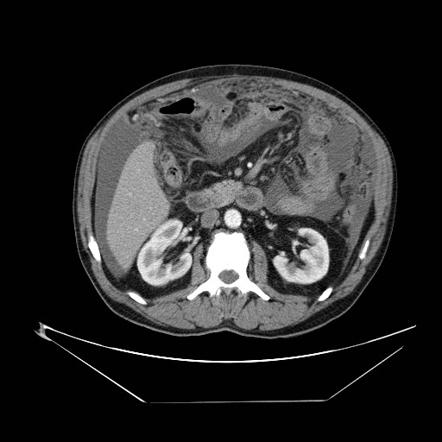Sedation with 25 mcg fentanyl and 1 mg midazolam iv. How you have an ultrasound scan.

A Retrospective Analysis On The Diagnostic Value Of Ultrasound Guided Percutaneous Biopsy For Peritoneal Lesions Semantic Scholar
Decision is made to biopsy the left abdominal mass.
Peritoneal mesothelioma ultrasound. This article will focus on the benign form. Ultrasound scans use high frequency sound waves to create a picture of a part of the body. Mesothelioma is a malignant neoplasm originating from pleural or peritoneal surfaces.
Given the presence of the mesothelium in different parts of the body mesothelioma can arise in various locations 17. Other abdominal subtypes also discussed separately include. Many conditions can trigger this including peritoneal mesotheliomatreatments ultimately depend on the underlying medical condition and may include draining the fluid to reduce symptoms.
Because pleural mesothelioma is more common and often spreads to the peritoneal cavity it is sometimes necessary to determine if pleural mesothelioma is the primary cancer. Most tumors arise from the pleura and so this article will focus on pleural mesothelioma. Although they are referred to as benign after removal these lesions.
Malignant mesothelioma mm is an aggressive type of cancer originating from the mesothelial cells of the pleura peritoneum pericardium and other serous membranes. This collection of fluid is called ascites and causes the abdomen to swell. Malignant peritoneal mesothelioma is an uncommon primary tumor of the peritoneal lining.
Diagnostic us demonstrates large masses seen on recent ct. It shares epidemiological and pathological features with but is less common than its pleural counterpart which is described in detail in the general article on mesothelioma. Peritoneal inclusion cysts occur almost exclusively in premenopausal women with a history of previous abdominal or pelvic surgery trauma pelvic inflammatory disease or endometriosis.
Mesotheliomas can be broadly divided into benign and malignant types. 10 ml 1 lignocaine in subcutaneous soft tissues and at peritoneum. This condition is usually associated with occupational exposure to asbestoswagner et al connected asbestos to mesothelioma in a classic 1960 study of 33 patients with mesothelioma who were exposed to asbestos in a mining area in south africas north western cape province.
The presentation is non specific and the diagnosis of mm should always be based on histopathological findings. Peritoneal mesothelioma causes the peritoneum to thicken and fluid to collect in the abdomen. At right lung base largest dimension measuring up to 6 cm and in left upper quadrant at splenic flexure measuring 12 x 8 x 6 cm.
Pleural mesothelioma 90 covered in this article. Patient is prepped and draped. Peritoneal effusion or ascites occurs when fluid builds up in the abdominal cavity.
Whereas the term mesothelioma will be reserved for true neoplasms as discussed on the multicystic mesothelioma article. Mesothelioma also known as malignant mesothelioma is an aggressive malignant tumor of the mesothelium. The scan shows up blood flow and changes in your tummy abdomen including abnormal growths.
The majority of cases can be related to asbestos exposure although the latency period may span decades. Mesotheliomas represent a proliferative neoplasm made up of epithelial and mesenchymal cells of the mesothelium which make up part of the serosal covering and lining of various organ surfaces within the body. You may have an abdominal ultrasound scan to check for peritoneal mesothelioma.

Mr Imaging Features Of Peritoneal Adenomatoid Mesothelioma A Case Report
Https Www Karger Com Article Pdf 346187
Https Journals Sagepub Com Doi Pdf 10 1177 8756479315611655
Https Encrypted Tbn0 Gstatic Com Images Q Tbn 3aand9gctohk7sv04ecg Kqqrq Cgadyxzhrj370u0spgr2 Arfl7y56tx Usqp Cau

Malignant Pleural Mesothelioma An Update On Investigation Diagnosis And Treatment European Respiratory Society

Us Of The Peritoneum Radiographics

Ascites Index An Attempt To Objectify The Assessment Of Ascites
